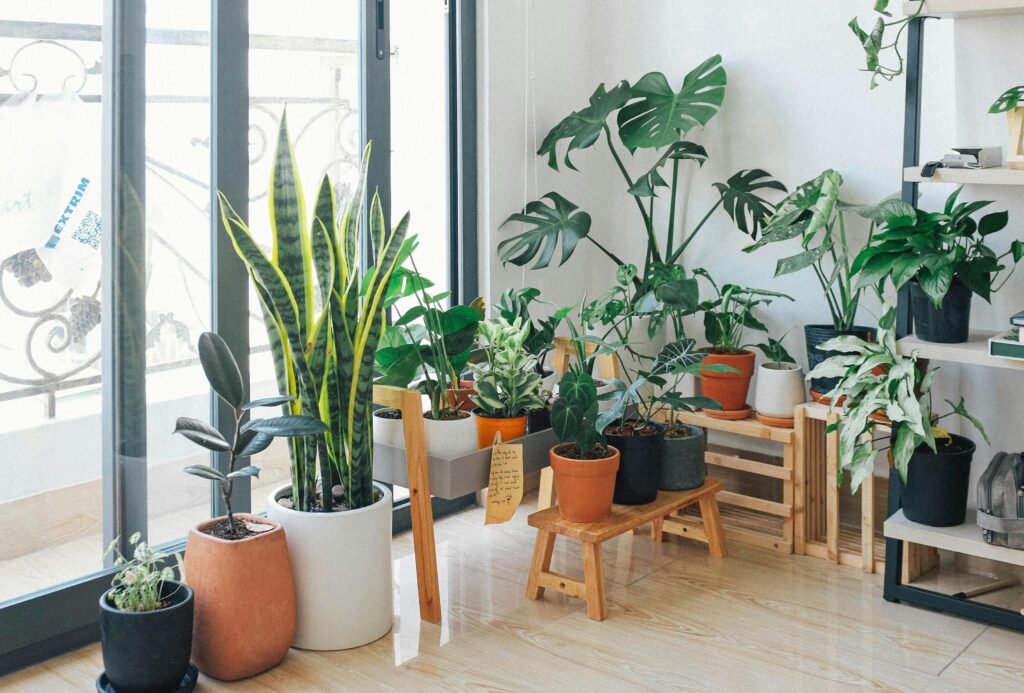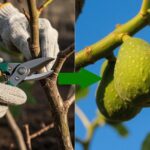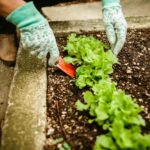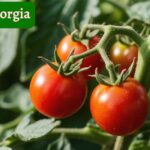Perennials are companions for many years instead of one year, so friendship with them must begin at the right time. Understanding when to plant perennial seeds is crucial to allow them to become decisive for the upcoming years.
Unlike annuals and biennials, perennials have strong adaptive features that allow them to adjust to any climate. That adjustment may show in the shape of annuals or biennials.
Environmental factors in any region highly affect plant growth, whether annual, biennial, or perennial. For now, regional climate, perennial plant variety, and season preference decide the exact planting time for perennial seeds.
So, keeping all factors (region climate, perennial variety, and season preference) in mind, we will understand when to plant perennial seeds.
When to Plant Perennial Seeds?
It is commonly said to plant perennial seeds in spring or fall, but it mainly depends on the seasonal preference, genetically programmed in perennial variety, especially for seed germination.
I mean, if plants are cool-season perennials (Lupines, Spirea) , you should plant their seeds in the fall so that they can germinate in the warmth of autumn and establish roots before the first frost.
Similarly, if there is a warm-season perennial (Hydrangea, Daylilies) , planting it in the spring allows it to germinate seeds in the mild spring weather and establish roots before the summer heat.
The main point is the phase of germination of perennial seeds. If the seed is planted at the right time, it will germinate effectively without the shock of winter and summer for long-term growth.
Discover Trending on Post on GardenChains
- Zone 5: Frost Dates and Growing Season With Areas
- Why Are Seeds Popping Out of the Soil When Worms Fertilize?
- When to Take Fig Tree Cuttings in YOUR AREA
- When to Sow Lettuce Seeds: YEAR-ROUND Planting Window
- When to Plant Tomatoes in Zone 5 for Healthy Harvest?
- When to Plant Tomatoes in Georgia? (Tips for USDA zones 7b to 9a)
How to Know The Exact Planting Time for Planting Perennials Seeds According to Local Climate
Planting perennial seeds at the right time is really important, so you need to explore all factors (that influence their planting time and overall growth) one by one. In this way, you can plant your perennial seeds at the most suitable time, and that too according to the local climate.
1-First, Know your Perennial Type
Firstly, we need to understand the perennial type —woody or herbaceous actually, the difference in planting time for both is due to survival behavior and growth mechanisms.
You should plant seeds of herbaceous perennials, such as Peony, Hosta, and Daylily, during late summer or early fall because in the start of growth stage, the upper part of herbaceous perennials may die during winter, so we have to allow them to make strong roots before the frost. This time keeps alive perennials internally during the winter, which causes better spring growth.
On the other hand, woody perennials, such as Lavender, Hydrangea, and Rose, require to mature properly before winter. Early spring is the best duration to plant woody perennials as this phase provides warm soil and a longer season for establishment.
2-Check Season Preference of Perennial: Cool or Warm Season
Beyond the perennial type, also check what seasonal conditions your perennial plant prefers.
Cool-season perennials, such as Poppies, Larkspur, and Columbine, are designed to grow in the cool season from fall to winter. So, planting time should be late summer to early fall so that they can germinate seeds in the mild situations of late summer to early fall and thrive rapidly in cooler winter.
Warm-season perennials include Milkweed, Salvia, and Coneflower. These plants are addicted to long daylight and summer heat, and sensitive to frost—planting them early damages the young growth stage. Late spring to late summer offers enough heat required for seed germination of warm-season perennials.
3-Analyze your Zone and Region Climate
The last and most important factor that you need to consider before planting perennial seeds is analyzing the regional climate situation.
Colder Region
Cool-season perennials (Some varieties of foxglove, Larkspur, and Poppies) grow best in colder areas, such as Northern U.S. states, Montana, and Minnesota, because they need cold stratification to germinate.
Cool Season Perennials + Colder Areas= Late fall
However, if you want to grow warm-season perennials, such as Bee Balm and Coneflower, you can plant them indoors during early to late winter. Sowing directly outdoors will be possible in early spring when there is no frost risk.
Warmer Region
Warmer areas, such as Southern U.S. states, Florida and Texas offer suited climates for warm-season perennials (Coneflower and Salvia).
Warm Season Perennials + Warmer Areas= Early Spring to Late Summer
If you want to grow cool-season perennials here, you need to plant their seeds in late fall. In warmer regions, direct sowing outdoors in early spring or even late winter is also possible because the ground warms quickly.
Do You Know About Planting Native Perennial Seeds?
Perennials that grow best according to the environmental conditions and local climate situation of a region are called native perennials of that region.
Actually, they have been growing there long before we started gardening books and seed catalogs. Growing native perennials where they truly belong means you don’t need to consider extra care, unique lights, or indoor setups.
But one thing you need to understand is when to plant native perennial seeds. Because planting native perennial seeds is also dependent on perennial variety and native region.
For example, According to Finegardening, New Jersey is a cool season perennial native to North America. If its native seeds planted in the fall, no special preparation is required. These native seeds automatically go through cold stratification and germinate naturally in the spring, just as they do in their native environment.
However, if planted in the spring, it is beneficial to soften the seeds with warm water.
Combine All 3 Factors: Find YOUR Exact Planting Time for Perennials Seeds
Perennial Type +Season Preference +Zone = Planting Time for Perennial seeds
There is a formula for you to discover the exact planting time for perennial seeds;
Now, all your confusion is over because we will calculate the planting time by using the above formula.
The planting time for your perennial seeds is dependent on three points;
1: Which Type of Perennial do you have?
- Herbaceous or Woody? Lavender or Rosemary?
- Cool-season or warm-season? Poppy or milkweed?
2: What is your area?
- Colder Region (Zone 3 to 6) Planting time may be late.
- Warmer Region (Zone 7 to 10+) Planting time starts early.
Discover our category, gardening zones!
An Example to Decide Exact Planting Time for Perennial Seeds
Suppose you have lavender (which is the warm season perennial) and you live in zone 5 (the cooler area).
- Then, you need to start planting perennial seeds indoors before 8-10 weeks before spring.
- It means your planting time for lavender perennial (herbcause+warmseason) will be late winter to early spring (indoor) and transplanting time will occur in the late spring.
On the other hand, if any gardeners live in warmer areas, such as Zone 9, and have woody and cool-season perennials, such as Peony:
- He/She can do direct sowing in the fall or very early spring.
Perennial Plant Types & Examples by Region
❄️ Colder Region (Zone 3–6)
🍃 Cool Season
Herbaceous:- Lupines
- Peonies
- Delphiniums
- Forsythia
- Dogwood
- Spirea
🌞 Warm Season
Herbaceous:- Black-eyed Susan
- Daylilies
- Coreopsis
- Hydrangea
- Viburnum
- Lilac
☀️ Warmer Region (Zone 7–10)
🍃 Cool Season
Herbaceous:- Gaura
- Salvia
- Penstemon
- Camellia
- Gardenia
- Sweet Osmanthus
🌞 Warm Season
Herbaceous:- Mexican Petunia
- Blanket Flower
- Yarrow
- Hibiscus
- Oleander
- Crepe Myrtle
Indoor Vs Outdoor Sowing Perennial Seeds: Which Work Best

The decision between indoors and outdoors for planting perennial seeds can be made after determining the planting time of perennial seeds. By keeping all factors in mind, when we calculate the exact planting time to sow perennial seeds then, we need to consider the local climate;
- Will the local climate allow the plant to survive at a chosen planting time?
- Is soil workable?
- Is temperature safe for perennial seed germination?
- No frost? No excessive rain? No heatwave?
When to Plant Perennial Seeds Indoor?
If at your planting time:
- Soil is still frozen
- There is frost risk outdoor
- Day temperature is less than 10C or preference of perennial type.
- There is excessive rain or snowfall.
So, plant perennial seeds in indoor trays and pots by keeping them under the artificial grow lights. You can transplant tiny perennial seedlings outdoors after 6 to 8 weeks when the weather has warmed up. After hardening off and transplanting outdoors, you may not need to worry anymore! just you have to take care of water and pest control.
When to Plant Perennial Seeds Outdoor
If at your planting time:
- Soil is soft and workable
- There is no frost risk
- Temperature is a minimum of 10 to 15C or according to perennial variety.
- The days are long and sunny.
Then, you can easily sow perennial seeds outdoors. After planting perennial seeds outdoors, be careful at the beginning growth stage because unexpected weather conditions, such as intense sunlight, excessive rain, and strong winds, are unreliable.
- Keep the soil moist to prevent the perennial seeds from drying out.
- Cover with cloth or mulch if there is a risk of cold or rain.
- If warmness increases, provide shade to perennial seeds.
- Check that there is no rough water or animal activity in the seedbed area.






